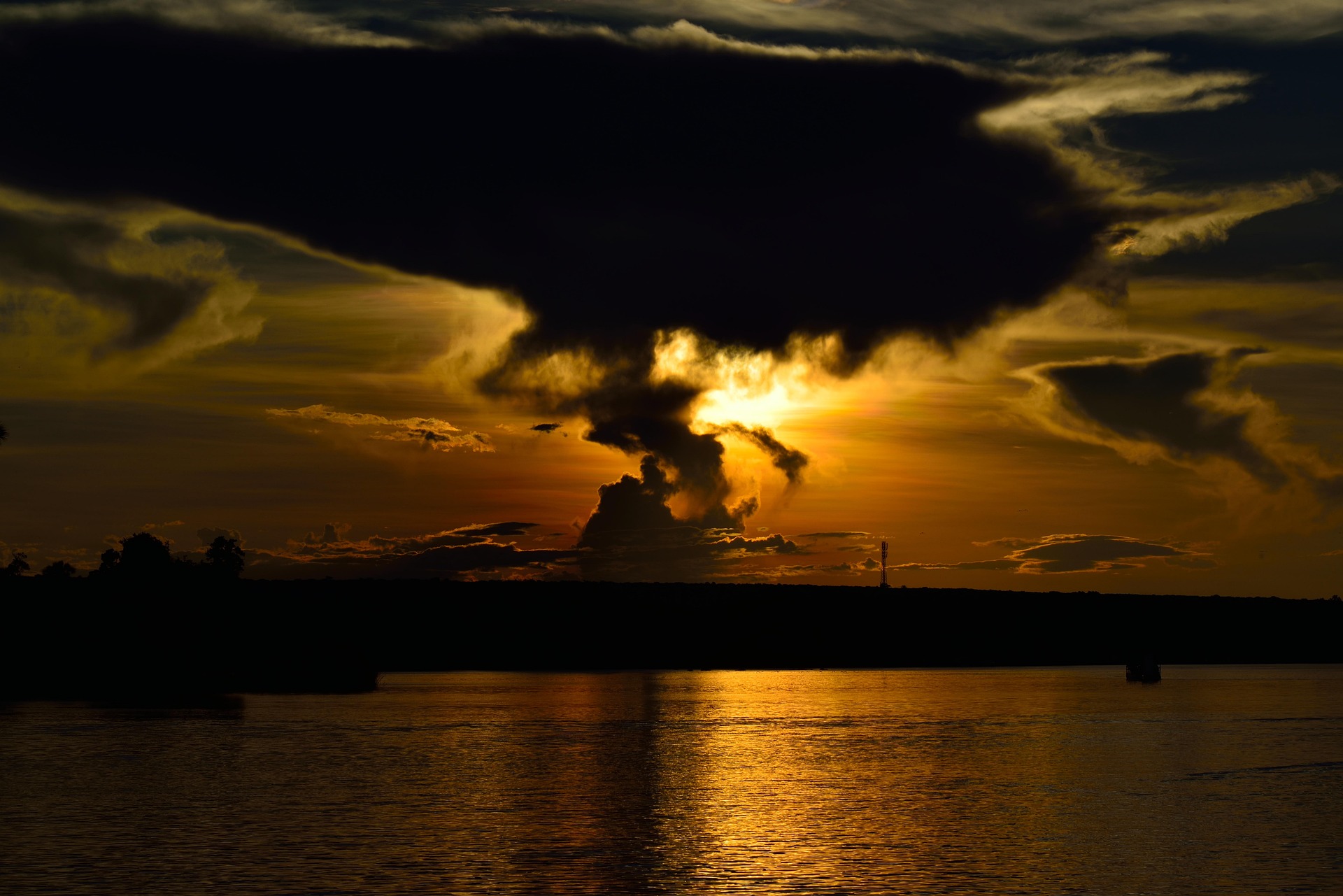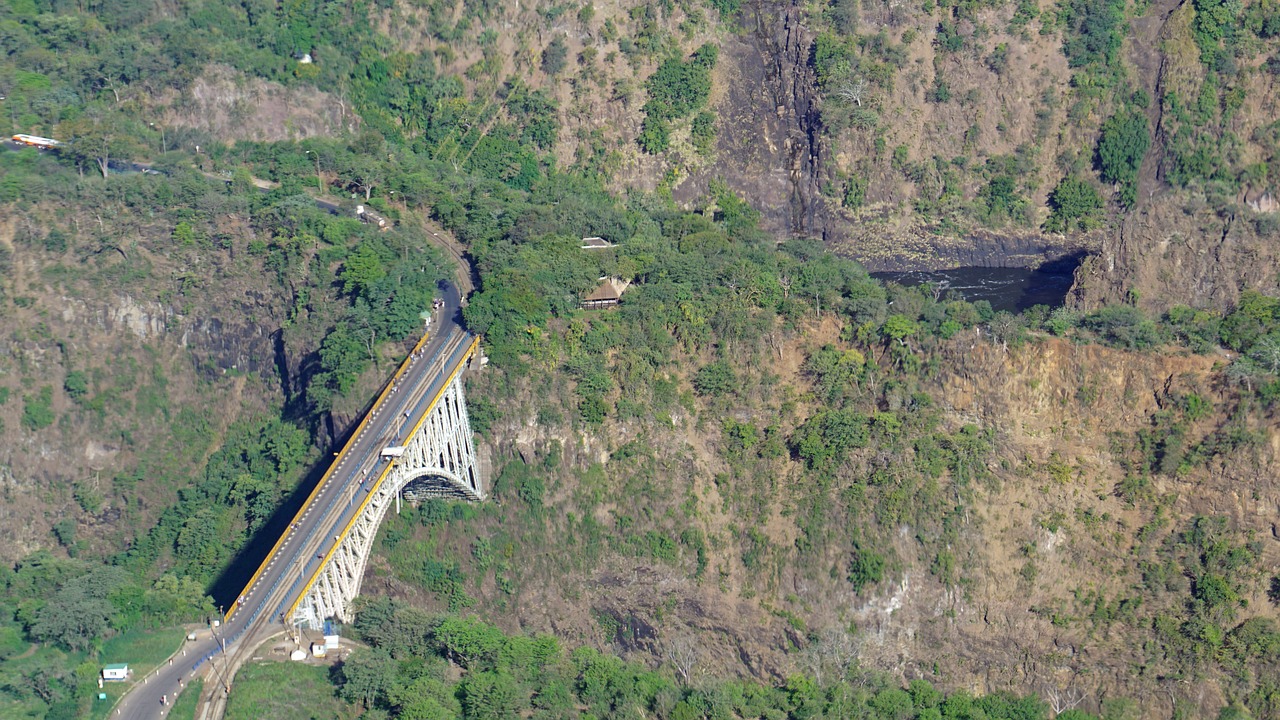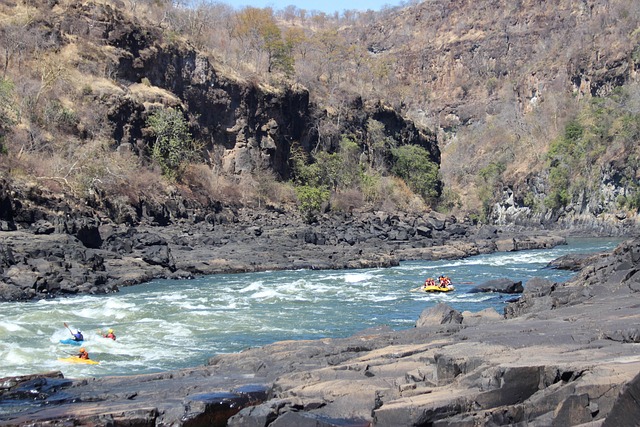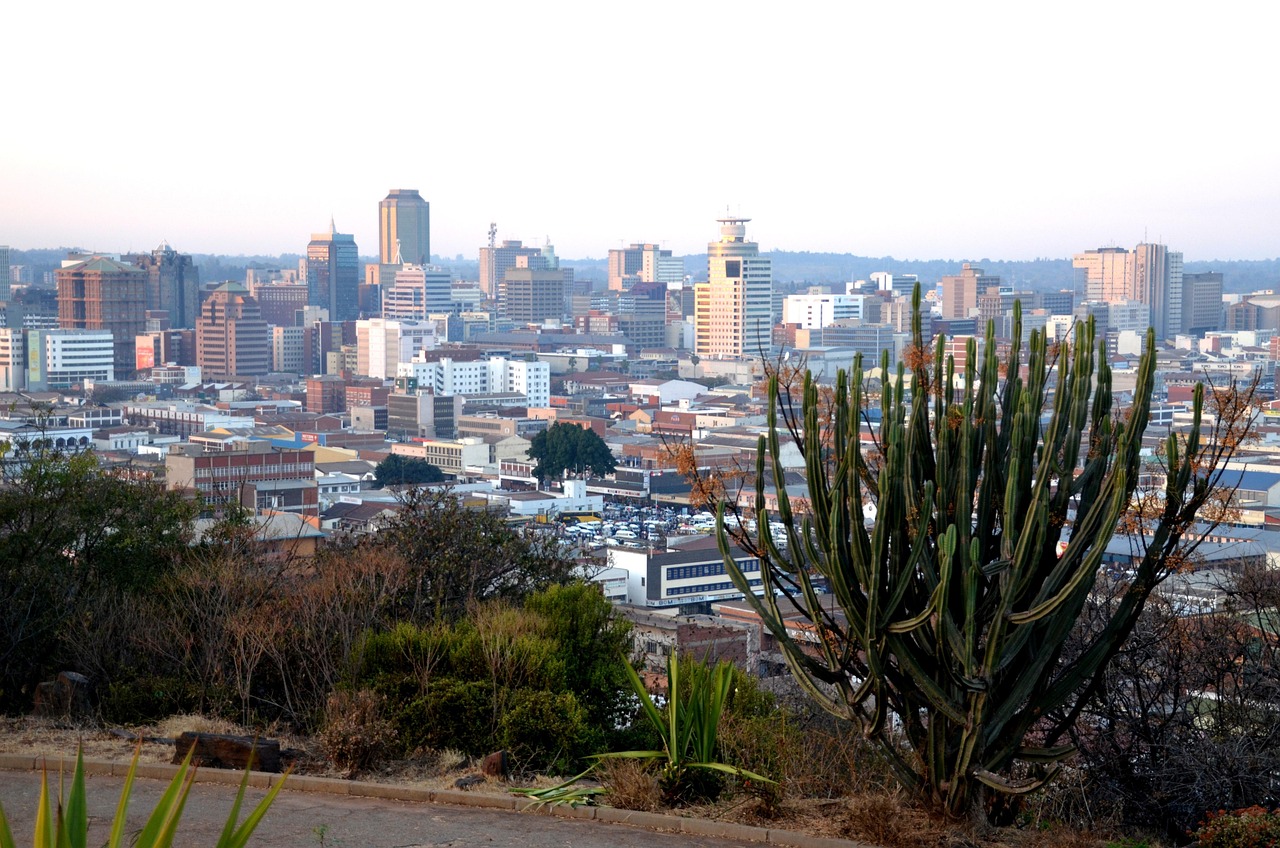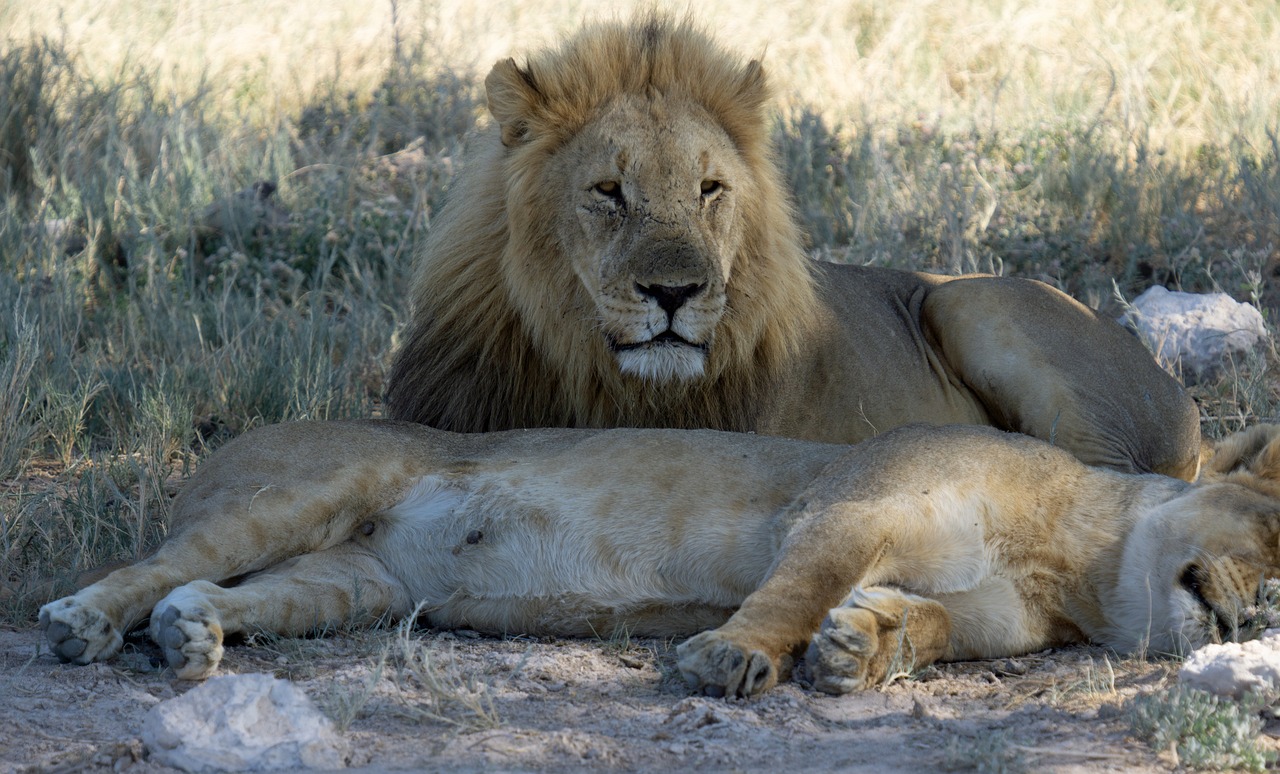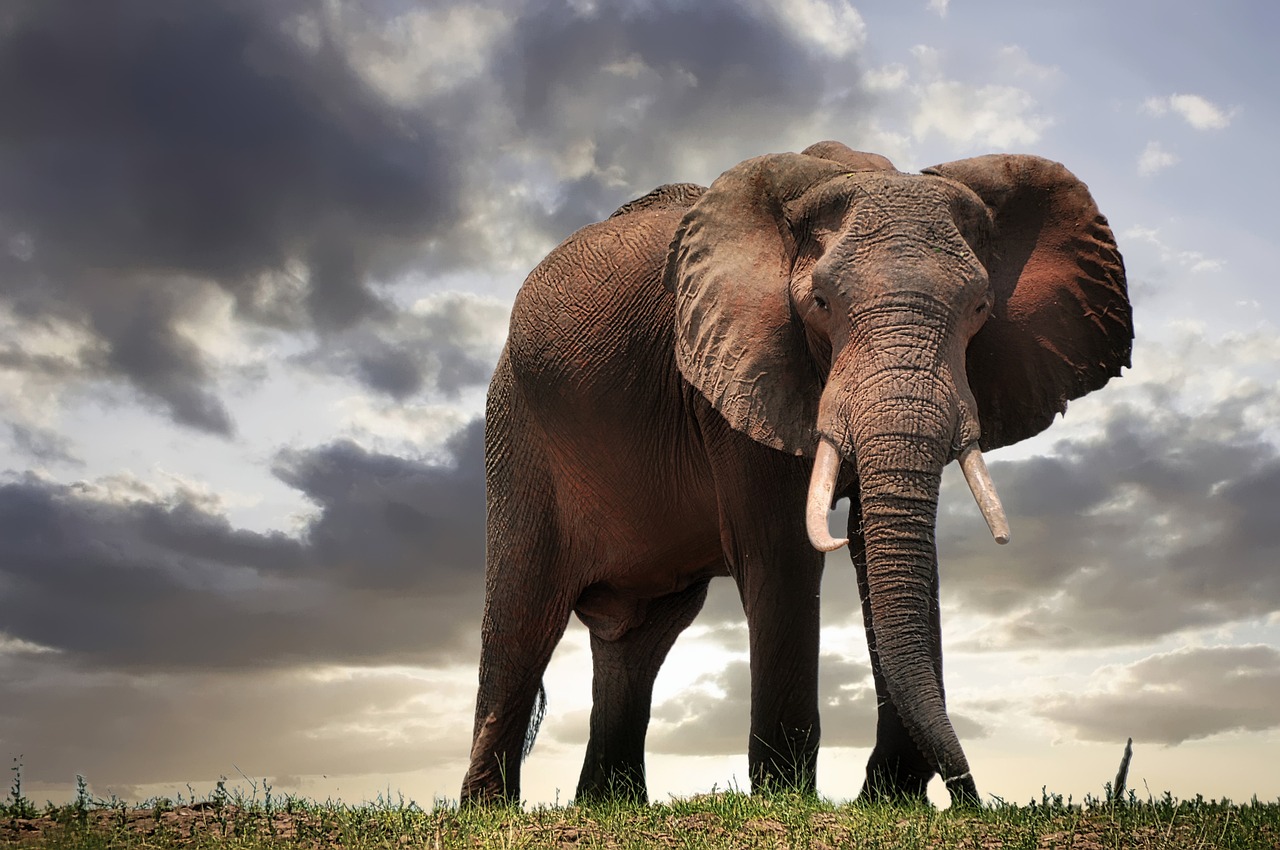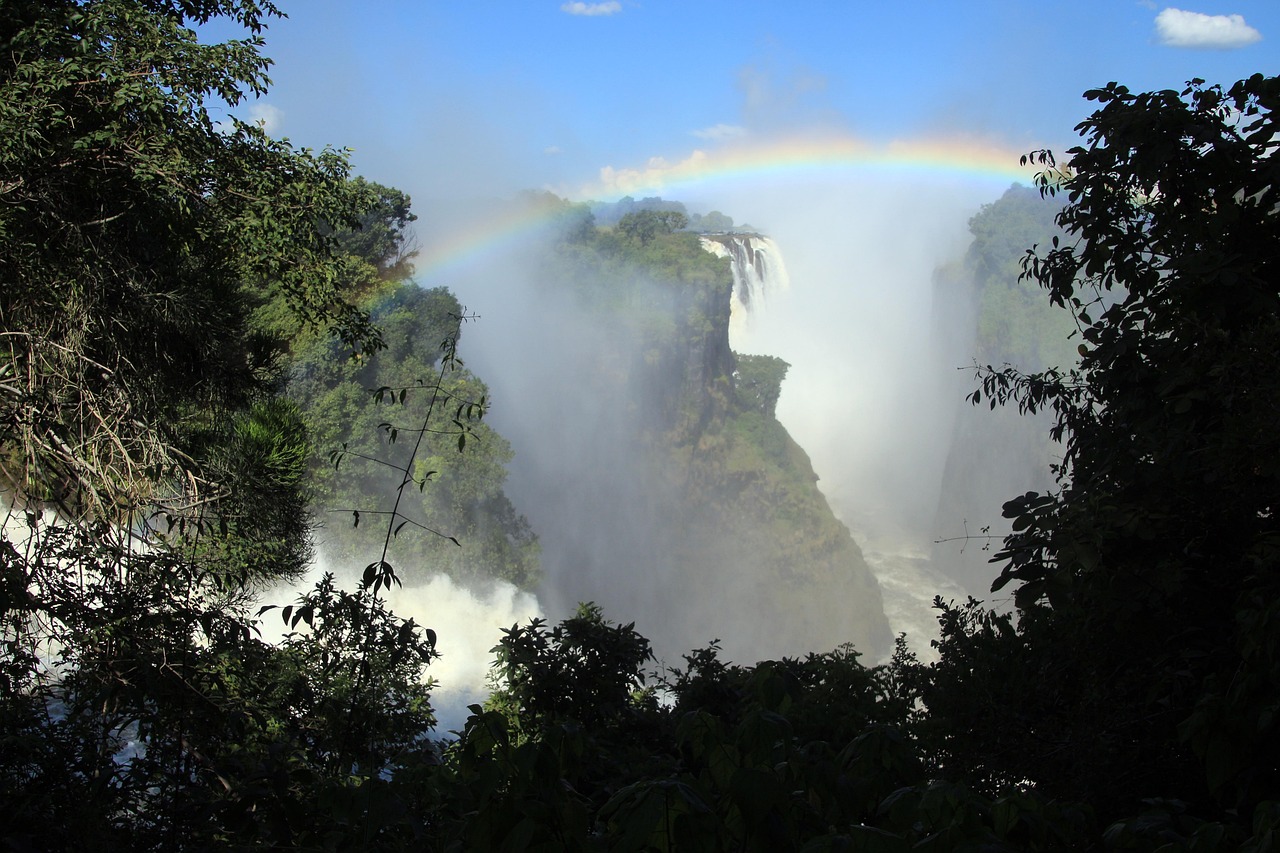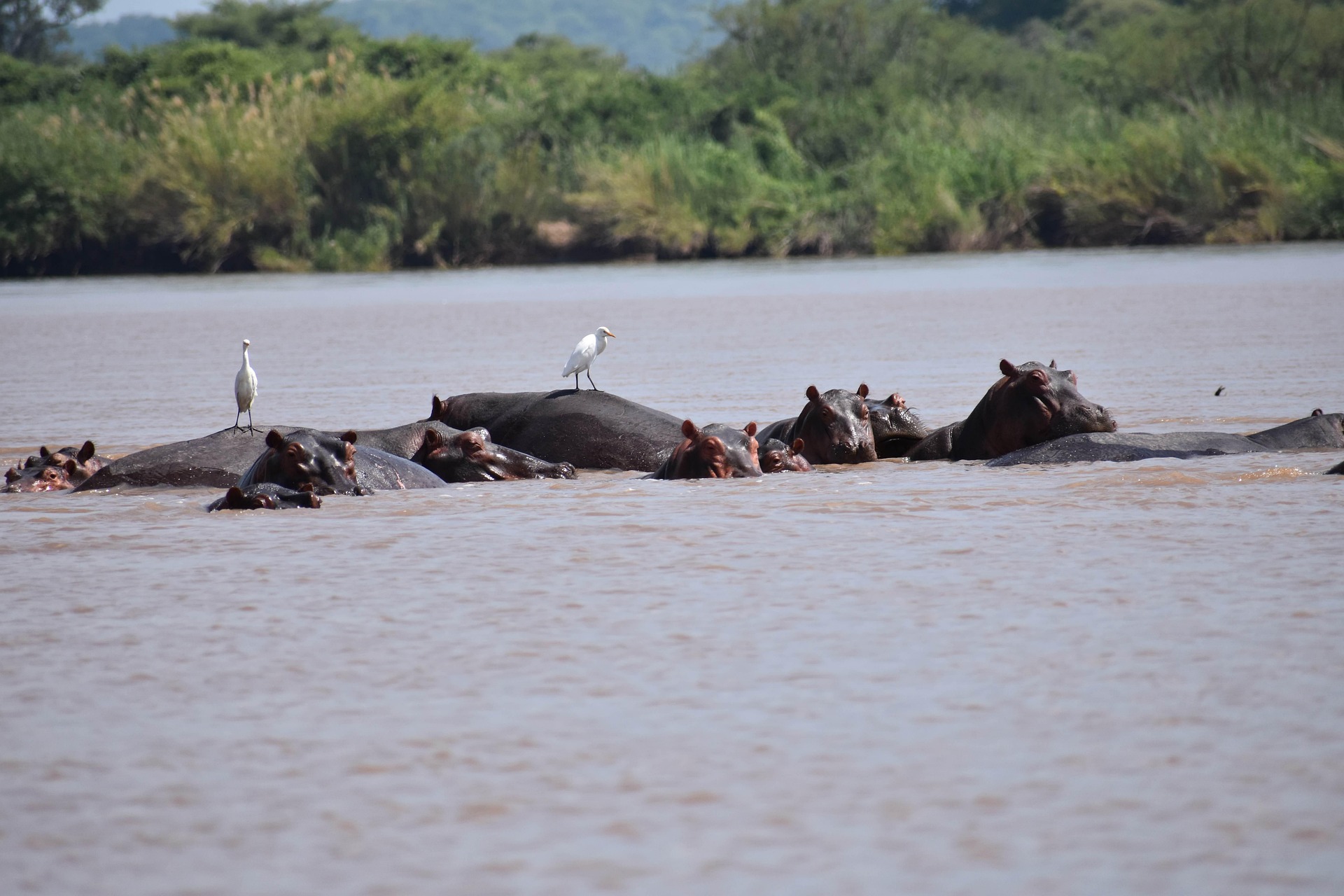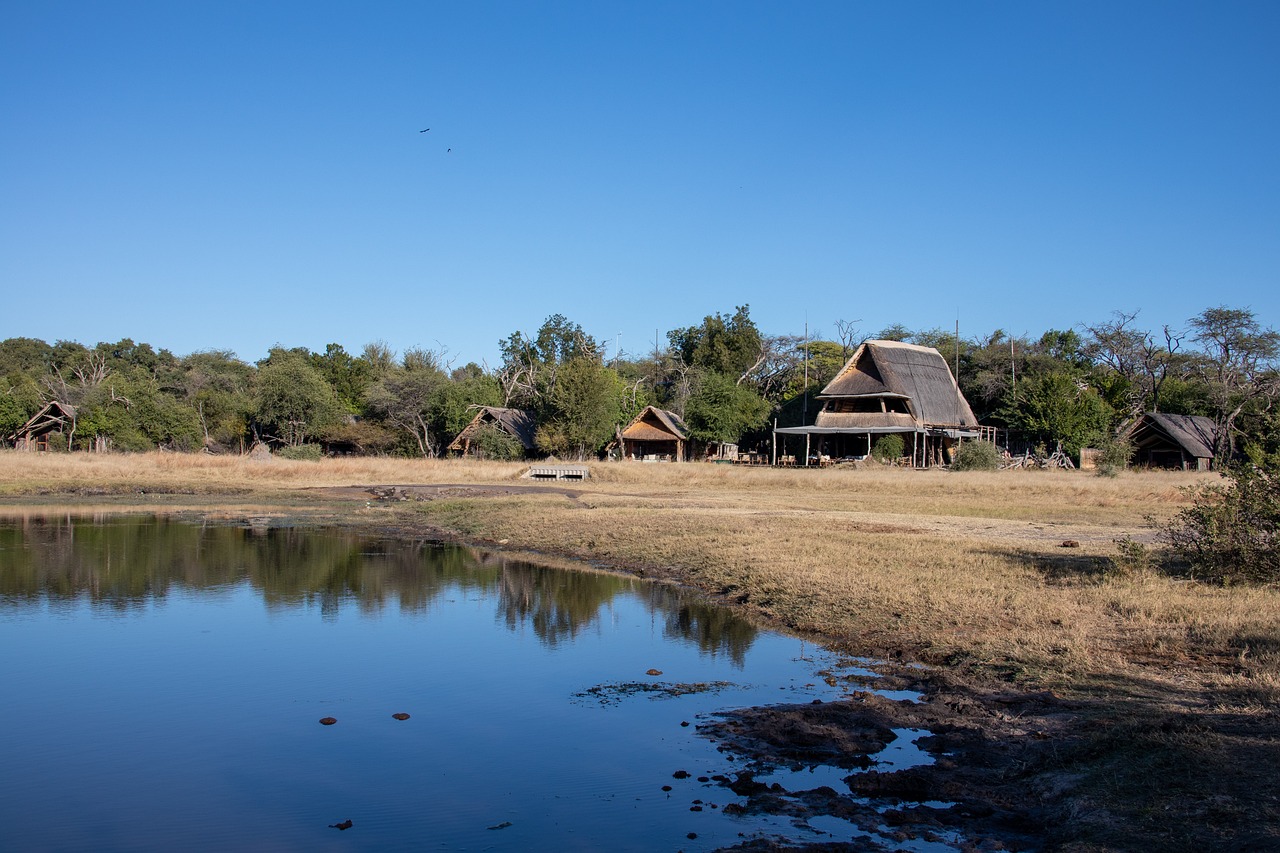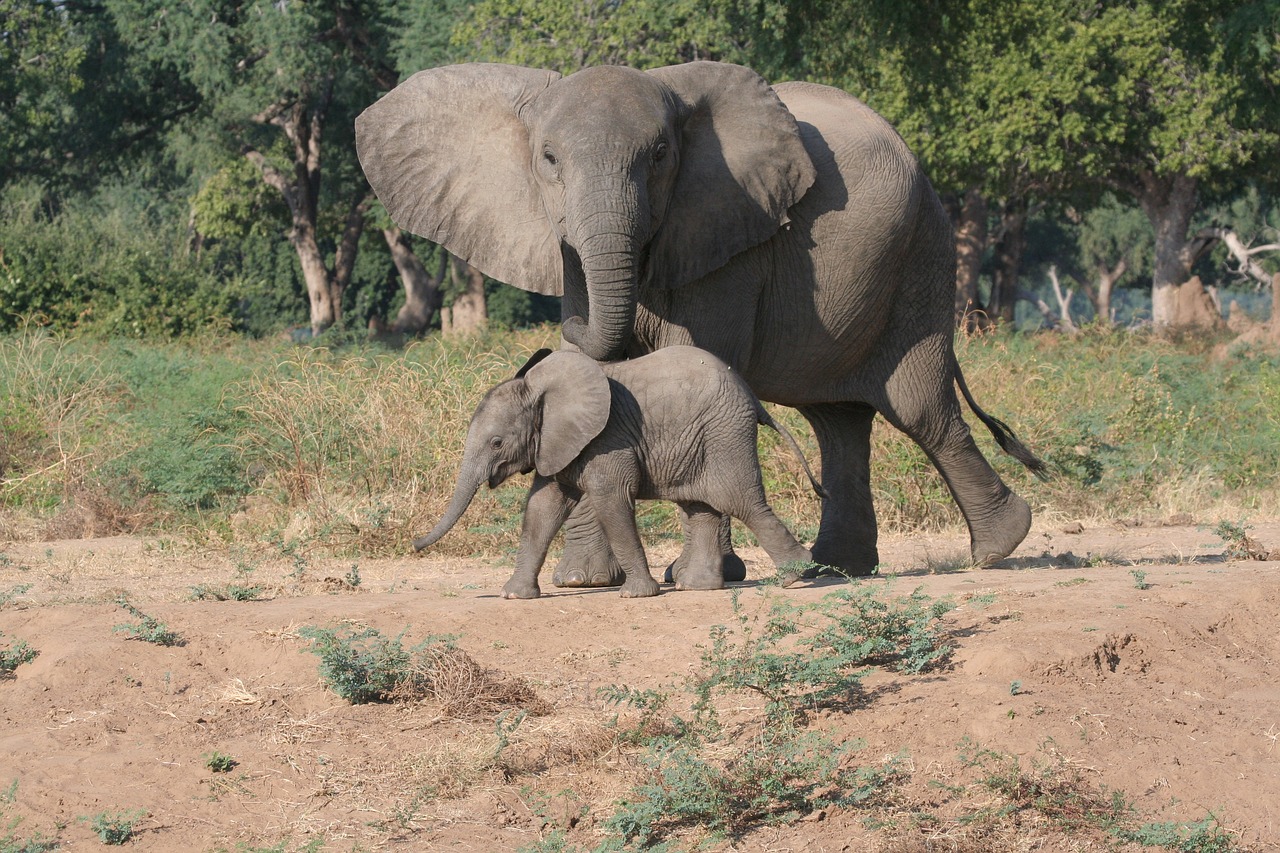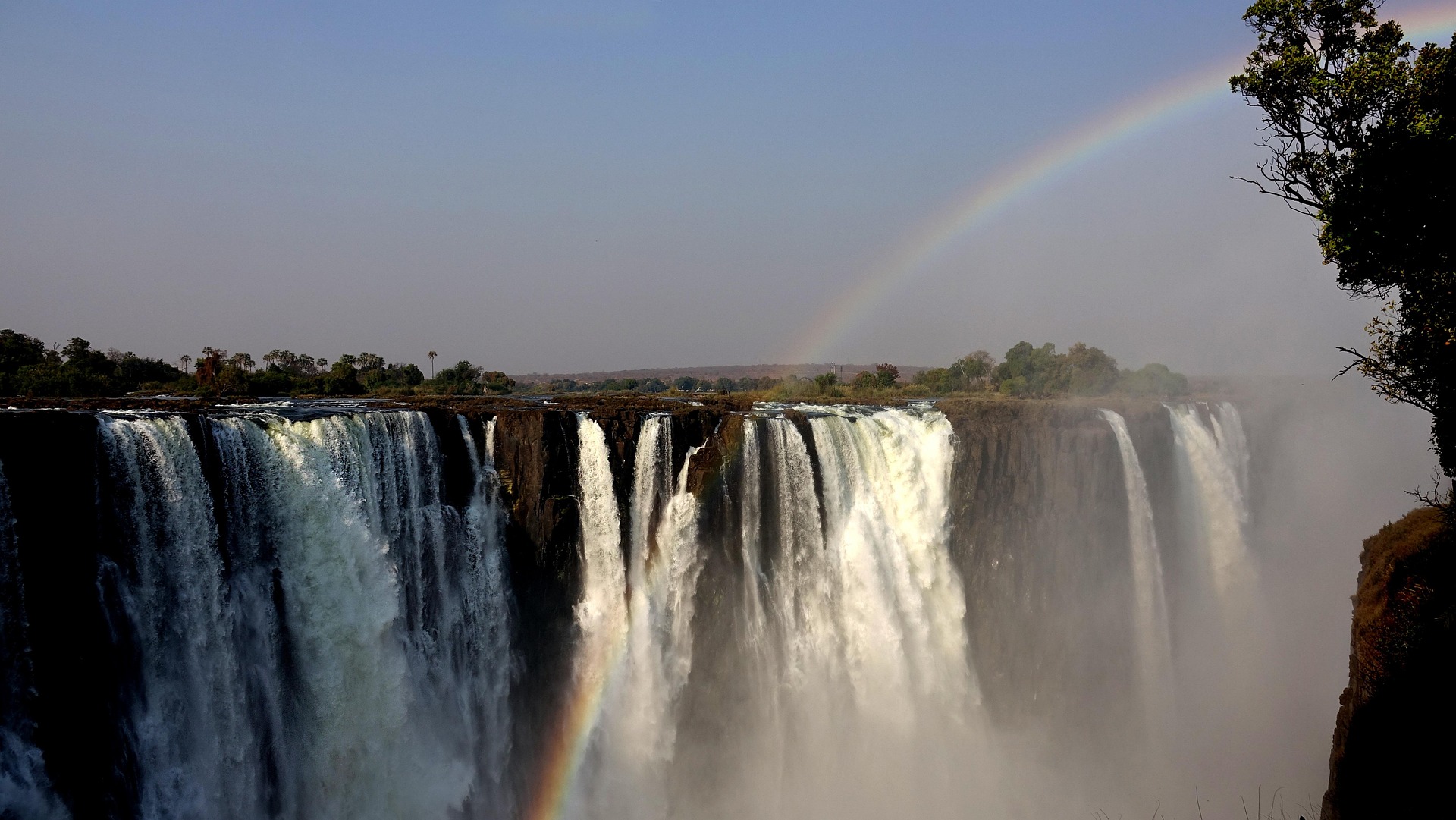
Zimbabwe
Everything you need to know about Zimbabwe. A complete travel guide.Zimbabwe
Overview
A complete travel guide to Zimbabwe.
Everything you need to know before visiting Zimbabwe for a safari
Zimbabwe offers a distinctive safari experience — vast, uncrowded wilderness with globally significant wildlife and scenic landscapes. Its leading wildlife areas include Hwange National Park, Mana Pools National Park and Zambezi National Park — all rich in elephants, lions, buffalo, wild dog, and over 350 mammal species. Hwange supports more than 50,000 elephants, the largest herds in the region. At the same time, Mana Pools, a UNESCO World Heritage Site, offers unmatched walking and canoe safaris along the riverfront.
Guided by some of Africa’s most rigorously trained safari guides and complemented by emerging community‑run lodges, Zimbabwe combines classic big‑game viewing with low visitor numbers and genuine conservation impact. Every year, it draws travellers seeking authentically wild, value‑rich safaris — often off the typical tourist path.
Explore Zimbabwe Below:
Explore other countries:
Continue your safari planning journey across Africa’s top countries
Not sure if Zimbabwe is your perfect fit? Click below to explore and compare other safari countries.
Safety
Everything you need to know about safety in Zimbabwe
Crime and civil unrest can pose risks in cities or around protests. Still, safari areas in Zimbabwe remain low‑risk and well managed. Guided lodges, the Tourism Police Unit, and strict entry checks offer a secure safari experience.
Expert tip: Keep guards informed of your itinerary, leave original documents locked at your lodge, carry only small amounts of local or US cash discreetly, and travel with a licensed safari operator—especially at night or on rural roads.
A Deeper Understanding Of Safety In Zimbabwe
Zimbabwe’s official travel advisories recommend travellers “exercise increased caution” due to opportunistic crime (like mugging, car‑jackings, and smash‑and‑grab thefts), which mostly occur in urban areas after dark—especially Harare, Bulawayo, and Victoria Falls town.
Public demonstrations and political gatherings can turn unpredictable. Even events intended to be peaceful may become violent without warning. Avoid all protests and monitor local media for updates.
Savannah roads can be dangerous after dark. Zimbabwe has one of Africa’s highest road‑accident rates, especially on rural highways and poorly maintained asphalt. Driving after dusk is strongly discouraged.
Wildlife areas like Hwange, Mana Pools, and Zambezi National Parks enforce tight access controls and use Tourism Police Unit patrols, especially at Victoria Falls and major parks. Guided safaris follow safety protocols to keep guests shielded from wildlife and human threats. While basic services may falter, camp lodges and private safari camps remain equipped for medical emergencies. National emergency services are limited, so travel insurance with medical evacuation is advised for unexpected incidents such as accidents or illness.
VISA
Everything you need to know about visas for travel to Zimbabwe
Most travellers require a 30‑day single‑entry visa, available on arrival or via the e‑Visa system, payable in USD. Citizens of visa‑exempt countries (Category A, e.g. SADC nations like Botswana, Zambia, Namibia, South Africa, Malawi, and Tanzania) enter without a visa.
Use the following links to see your visa requirements when travelling to Zimbabwe:
Expert tip: Apply via the official Zimbabwe e‑Visa portal before departure to fast‑track entry and avoid queues and card‑or‑cash hassles at the airport.
A Deeper Understanding Of Visa Requirements For Zimbabwe
Zimbabwe classifies visitors into three categories: Category A (visa-exempt), Category B (Visa on arrival or e-Visa available), and Category C (Visa must be obtained before travel). Passport must be valid for at least 6 months, with a return/onward ticket, proof of funds, and two blank pages.
Category B visitors may choose from a single‑entry visa (USD 30), double‑entry (USD 45), or multiple‑entry (USD 55); fees are higher for nationals of some countries such as the UK, Ireland, Canada and China. You may extend your stay up to 90 days via official Immigration Department offices within Zimbabwe.
Zimbabwe also participates in the KAZA UniVisa, valid for 30 days and allowing entry to both Zimbabwe and Zambia and day-trips into Botswana (not for overnight stays).
Applications can be made in USD, online (recommended), or on arrival with cash/card. Once approved, an immigration declaration form must be completed online or on arrival
Vaccinations
Vaccinations are needed to visit Zimbabwe.
A yellow fever certificate is only required for travellers aged 9 months or older who arrive from or transit through a yellow‑fever risk country. Routine immunisations (e.g. measles, tetanus, polio) should also be up to date before travel.
- Vaccinations Required: Yellow fever (certificate required if arriving from or transiting through a yellow‑fever risk country)
- Use the following link to find vaccination information for Zimbabwe: https://skyteam.traveldoc.aero/
Expert tip: Plan to book your travel-health appointment at least 4–6 weeks ahead of departure—this gives enough time to complete multi-dose vaccines such as hepatitis A or rabies series.
A Deeper Understanding Of Vaccination Requirements for Zimbabwe
Zimbabwe itself has no yellow‑fever transmission risk, but entry rules may require a yellow‑fever certificate if your travel originates or passes through another African country at risk, including long stopovers or transit via affected zones.
Most travellers are not required to get this vaccine. Still, entry rules may vary—always check based on your travel itinerary and consult an authorised yellow fever vaccination clinic.
All visitors should ensure they are up to date with routine vaccines such as MMR (measles-mumps-rubella), tetanus‑diphtheria, and inactivated polio vaccines—essential since wild poliovirus cases are still monitored in the region.
Safari travellers are generally recommended to receive:
- Hepatitis A (due to food and waterborne risk)
- Typhoid (common in areas with lower sanitation)
- Rabies (if planning significant wildlife interaction, veterinary or adventure work)
Malaria prophylaxis is advised in many rural areas of Zimbabwe. Still, it is not a vaccination—your travel clinic will advise on suitable antimalarial tablets and mosquito‑biting precautions. Vaccines such as cholera, Japanese encephalitis, or chikungunya are rarely required unless your itinerary involves prolonged stays in refugee camps, coastal Mozambique/Zambia, or extended live-aboard expeditions via countries with known outbreaks.
Speak with a travel‑medicine professional who will tailor your vaccination plan according to your route, duration, planned activities, and medical history.
Weather and climate
Everything you need to know about weather and climate in Zimbabwe
Zimbabwe has a clearly defined wet season (typically mid-November through March), bringing hot, humid days and frequent afternoon storms. The cool dry winter (May to October) offers crisp mornings, sunny days and ideal game‑viewing conditions.
Seasonal Breakdown:
- Summer: November to March — average lows around 17 °C (62 °F), highs near 27 °C (81 °F), with steady rainfall averaging about 150 mm (6 in) per month.
- Winter: May to August — average lows near 10 °C (50 °F), highs around 21 °C (70 °F), with rainfall under 10 mm (0.4 in).
Expert tip: In the dry season, early‑morning safaris can feel chilly—layered clothing is key. During the green season, afternoon rainfall is frequent—bring waterproofs and insect repellent for comfort.
A Deeper Understanding Of Weather And Climate In Zimbabwe
Zimbabwe’s climate pivots around two main seasons. The rainy (or “green”) season from November to March fills the highveld with lush vegetation and birdlife. Still, it can obscure wildlife visibility amid thicker foliage. Afternoon showers are common, especially in January and February.
By contrast, the dry winter season (May–October) brings sunny skies, minimal rainfall, and clear visibility—offering peak game‑viewing conditions and warm days but cold mornings, especially in May–July. June through August are widely considered the best months to visit for open vegetation, easy game spotting, and low mosquito risk.
Beyond Harare’s highland plateau (1,500 m), low‑lying safari areas such as Hwange and Mana Pools can be notably hotter in summer (daytime highs often over 30 °C / 86 °F), but these regions also see an earlier and stronger rainy season due to regional weather patterns.
Table representing weather and climate in Zimbabwe by month
| Month | Avg Low (C / F) | Avg High (C / F) | Precipitation (%) | Rainfall (mm / in) | Rainy Days (avg) | Humidity (%) | UV Index |
|---|---|---|---|---|---|---|---|
| January | 17 °C / 63 °F | 27 °C / 80 °F | 58 % | 175 mm / 6.9″ | 18 days | 79 % | 18 |
| February | 16 °C / 62 °F | 27 °C / 80 °F | 48 % | 134 mm / 5.3″ | 13 days | 81 % | 16 |
| March | 15 °C / 59 °F | 27 °C / 80 °F | 29 % | 90 mm / 3.6″ | 9 days | 79 % | 14 |
| April | 13 °C / 56 °F | 25 °C / 78 °F | 11 % | 33 mm / 1.3″ | 3 days | 76 % | 13 |
| May | 10 °C / 50 °F | 23 °C / 73 °F | 2 % | 8 mm / 0.3″ | 1 day | 70 % | 10 |
| June | 8 °C / 47 °F | 21 °C / 69 °F | 1 % | 2 mm / 0.1″ | 0 days | 61 % | 9 |
| July | 8 °C / 46 °F | 21 °C / 69 °F | 1 % | 3 mm / 0.1″ | 0 days | 57 % | 8 |
| August | 11 °C / 52 °F | 25 °C / 77 °F | 0 % | 1 mm / 0.0″ | <1 day | 46 % | 11 |
| September | 13 °C / 56 °F | 29 °C / 84 °F | 2 % | 1 mm / 0.0″ | 1 day | 39 % | 12 |
| October | 16 °C / 60 °F | 30 °C / 86 °F | 13 % | 23 mm / 0.9″ | 4 days | 43 % | 13 |
| November | 17 °C / 63 °F | 29 °C / 84 °F | 36 % | 100 mm / 4.0″ | 11 days | 57 % | 15 |
| December | 17 °C / 63 °F | 27 °C / 81 °F | 58 % | 134 mm / 5.3″ | 18 days | 71 % | 15 |
When To Go
Everything you need to know about the best time to visit Zimbabwe:
Going between June and October offers the clearest, driest weather and the best safari game‑viewing, while November to March favours birdwatchers and green‑season scenery.
Weather | Jan | Feb | March | Apr | May | Jun | Jul | Aug | Sep | Oct | Nov | Dec |
= Excellent = Good = Fair = Poor
- High season: July – October
- Low season: November – March
Expert tip: Visit mid‑August to early September for ideal weather, fewer crowds, and wildlife still gathering at waterholes before migration begins.
A Deeper Understanding Of The Best Time To Visit Zimbabwe
The dry winter season from May to October brings dry air, thinning vegetation, and animals gathering around limited water sources—delivering excellent visibility for safari across Hwange, Mana Pools and Zambezi National Parks. Peak safari months are July to October, when waterholes shrink and game concentrates; August and September are widely regarded as the optimum window for wildlife photography and sightings.
The shoulder months of April–May and early November mark transition periods—April offers a verdant backdrop with gradually improving visibility; May cools into winter, while November brings the first rains and excellent conditions for migratory birdwatching.
Finally, the green (rainy) season from November to March delivers dramatic landscapes and abundant birdlife, though wildlife is more dispersed among lush vegetation; afternoon storms and humidity are common, and some rural camps may close for maintenance or staff leave.
Table representing the best time to visit Zimbabwe:
| Month | Weather | Wildlife Viewing | Birdwatching | Temperature |
|---|---|---|---|---|
| January | ⛈️ | ✅ | 🐦🐦🐦 | 🔥 |
| February | ⛈️ | ✅ | 🐦🐦🐦 | 🔥 |
| March | 🌧️ | ✅ | 🐦🐦🐦 | 🔥 |
| April | 🌤️ | ✅ | 🐦🐦 | ☀️ |
| May | ☀️ | ✅✅ | 🐦🐦 | ❄️ |
| June | ☀️ | ✅✅ | 🐦 | ❄️ |
| July | ☀️ | ✅✅✅ | 🐦 | ❄️ |
| August | ☀️ | ✅✅✅ | 🐦 | ☀️ |
| September | ☀️ | ✅✅✅ | 🐦🐦 | ☀️ |
| October | 🌤️ | ✅✅✅ | 🐦🐦 | 🔥 |
| November | 🌧️ | ✅✅ | 🐦🐦🐦 | 🔥 |
| December | ⛈️ | ✅ | 🐦🐦🐦 | 🔥 |
Table Legend:
Weather: ⛈️ Thunderstorms, 🌧️ Rain, 🌤️ Partly Cloudy, ☀️ Dry
Wildlife Viewing: ✅ Average, ✅✅ Good, ✅✅✅ Great
Birdwatching: 🐦 Average, 🐦🐦 Good, 🐦🐦🐦 Great
Temperature: ❄️ Cold, ☀️ Warm, 🔥 Hot
Getting Here
Everything you need to know about getting to Zimbabwe:
Most safari guests arrive via Victoria Falls (VFA) or Harare (HRE) airports before transferring to lodges in Hwange, Mana Pools or other areas.
- Main point of entry to Zimbabwe: Victoria Falls International Airport (VFA) or Harare International Airport (HRE)
- Effort to get to Zimbabwe: 🟡 Medium
- Effort getting around Zimbabwe: 🟡 Medium
- Best ways to get around Zimbabwe: ✈️ Air; 🚙 Transfers
Expert tip: When flying into Victoria Falls, schedule your international arrival before midday to connect smoothly if using seat-rate charter flights to Hwange or Mana Pools.
A Deeper Understanding Of Getting To Zimbabwe
By Air
Zimbabwe’s two main international gateways are Victoria Falls International Airport (VFA) and Harare International Airport (HRE). VFA serves carriers like Airlink, Fastjet, South African Airways, and Kenya Airways, linking to Johannesburg, Cape Town, Windhoek and Nairobi.
Domestic flights and seat-rate charters — operated by Safari Logistics, Wilderness Air and others — connect VFA and HRE to safari airstrips in Hwange National Park, Mana Pools and other destinations. Fastjet currently schedules weekly flights between VFA and Hwange National Park Airport (HWN).
Most safari operators include internal flights in their itineraries; these significantly reduce travel time across Zimbabwe’s vast distances.
By Road
Zimbabwe’s road infrastructure is patchy. Although travellers can drive from Victoria Falls to Hwange National Park (roughly 102 km, one hour and 15 minutes via A8), poor road surfaces, paving hazards, and limited signage make roads hazardous, especially after dark or in rainy weather. Rural and safari routes may require a 4×4, but typical transfers are done in air‑conditioned minibuses by trusted companies.
Transfers and Accessibility
Upon arrival at VFA or HRE, guests usually reach safari areas via private transfers to their lodges, or via light-aircraft flights into close-by bush airstrips. Road transfers of 1–2 hours (for example, Victoria Falls to Hwange) remain viable. Still, they are typically used only when flight timings don’t align. Boutique lodges often arrange meet‑and‑greet services, customs escort, and onward transfer as part of a seamless travel experience.
Why Visit
This is why you should visit Zimbabwe:
Explore Zimbabwe for its rare combination of mega elephant herds, Big Five predators, and walk‑and‑canoe safaris at Mana Pools, topped off with the thundering Victoria Falls. Low visitor numbers and genuine conservation efforts add to its authentic safari appeal.
Expert tip: Many travellers overlook Zambezi National Park lodge stays — expect exclusive riverfront camps and boat safaris along the quiet Zambezi upstream of the falls.
A Deeper Understanding Of Why You Should Visit Zimbabwe
Zimbabwe offers wilderness that feels unspoilt, guided by some of Africa’s most experienced safari leaders. Its commitment to community-based conservation means your visit supports elephant, lion and rhino recovery across Hwange, Mana Pools, and the Victoria Falls ecosystem.
Hwange National Park wildlife
Home to one of Africa’s largest elephant populations and a recovering wild dog and rhino presence, Hwange offers excellent predator sightings in commercial game drives and remote hides. Its vast mopane woodland and seasonal waterholes attract large herds across open savanna.
Walking & canoe safaris at Mana Pools
A UNESCO World Heritage Site, Mana Pools National Park delivers walking and canoe safari experiences that let you track game on foot or glide past hippo and elephant families on the Zambezi—an immersive, low-impact way to connect with wildlife.
Victoria Falls & Zambezi River adventure
The Victoria Falls Region offers more than just the falls: expect boat safaris under ancient mahogany forests, sunset cruises past hippos and crocodiles, and waterside lodges combining pleasing dining and wilderness aesthetics.
Activities
Everything you need to know about safari activities in Zimbabwe:
Zimbabwe delivers an exceptional safari mix, from classic game drives across Hwange and Zambezi National Parks to immersive walking safaris at Mana Pools—designed for close encounters with wild dog, elephant and buffalo. Experience serene canoe safaris on the Zambezi River and leisurely boat trips—ideal for birdwatching, catch‑and‑release fishing, and wildlife spotting at waterside lodges.
Expert tip: Book walking safaris early in the day when predators are most active and rivers are calm for canoe safaris. Mixing activity types—land, water and walking—adds variety and depth to every itinerary.
Explore activities available in Zimbabwe:
Birds
Everything you need to know about birdlife in Zimbabwe
With over 700 observed species, Zimbabwe is a prime destination for birding—from majestic African fish eagle and colourful southern carmine bee‑eater, to the endemic Lilian’s lovebird and secretive Pel’s fishing owl. Peak birding season runs from November to March.
Birding | Jan | Feb | March | Apr | May | Jun | Jul | Aug | Sep | Oct | Nov | Dec |
= Excellent = Good = Fair = Poor
- Birds in Zimbabwe: African fish eagle; southern carmine bee‑eater; Lilian’s lovebird; Pel’s fishing owl; rock pratincole; Schalow’s turaco
- Best months for birding: November – March
Expert tip: The wet season reveals low sandbanks along the Zambezi, attracting dazzling bee‑eater breeding colonies and active riverbirds at dawn—ideal for canoe‑based birding.
Explore birds in Zimbabwe.
Wildlife
Everything you need to know about wildlife in Zimbabwe
With an estimated 23,000 elephants, healthy populations of lions, leopards and Cape buffalo, and wild dog packs still roaming Hwange and Mana Pools, Zimbabwe delivers unforgettable encounters with the Big Five and rare predators.
Wildlife | Jan | Feb | March | Apr | May | Jun | Jul | Aug | Sep | Oct | Nov | Dec |
= Excellent = Good = Fair = Poor
- Best months for wildlife viewing in Zimbabwe: June – October
Expert tip: Track predator sightings around Hwange’s artificial waterholes at the end of the dry season—herds congregate, visibility peaks, and guides know where lion, hyena and elephant gather best.
Explore wildlife in Zimbabwe
A Deeper Understanding Of Wildlife In Zimbabwe
Zimbabwe’s safari areas showcase dry‑season waterhole concentrations, where elephants, buffalo, zebra and antelopes gather visibly, boosting predator encounters. Mana Pools offers unusual walking and canoe safaris that bring guests in contact with wild dog packs and riverbank game, while Hwange’s wilderness fuelling elite guide‑to‑guest ratios adds depth to every encounter. The country also plays a vital role in rhino conservation—hosting over 600 black rhinos and 400 white rhinos, Zimbabwe ranks as Africa’s fourth‑largest rhino population centre. Cheetah sightings are rare, but populations remain within protected zones, and elusive small carnivores like caracal, aardwolf, and brown hyena add the thrill of rare sightings.
Table showing wildlife occurrence in Zimbabwe.
🔵 Plentiful 🟢 Common 🟡 Uncommon 🔴 Sporadic ⚫ Non‑occurring
| Species | Frequency |
|---|---|
| Lion | 🟢 |
| Leopard | 🟢 |
| Cheetah | 🟡 |
| Spotted Hyena | 🟢 |
| Brown Hyena | 🟡 |
| Striped Hyena | ⚫ |
| Black‑backed Jackal | 🟢 |
| Side‑striped Jackal | ⚫ |
| Caracal | 🟡 |
| Serval | 🟡 |
| African Wild Cat | 🟡 |
| African Wild Dog | 🟡 |
| Aardwolf | 🟡 |
| White Rhino | 🟡 |
| Black Rhino | 🟡 |
| Elephant | 🔵 |
| Buffalo | 🟢 |
| Giraffe | 🟢 |
| Hippo | 🟢 |
| Zebra | 🟢 |
| Blue Wildebeest | 🟡 |
| Black Wildebeest | ⚫ |
| Sable | 🟡 |
| Roan | 🟡 |
| Eland | 🟡 |
| Oryx | 🟡 |
| Kudu | 🟢 |
| Waterbuck | 🟢 |
| Lechwe | 🟡 |
| Sitatunga | 🟡 |
| Aardvark | 🟡 |
| Pangolin | 🟡 |
| Mountain Gorilla | ⚫ |
| Chimpanzee | ⚫ |
Where To Go
Everything you need to know about parks and reserves in Zimbabwe
Zimbabwe’s national parks—Hwange National Park, Mana Pools National Park and Zambezi National Park—offer affordable, accessible entry with set routes, fixed‑road game drives and standard safari itineraries. Nearby community conservancies and private concessions create exclusive experiences, from off‑road game drives and walking safaris to luxury lodges and more flexible safaris, often better for small‑group or solo travellers.
Best Parks, Reserves and Concessions in Zimbabwe:
- 🥇 Mana Pools National Park
- 🥈 Hwange National Park
- 🥉 Zambezi National Park
Expert tip: Stay at a camp inside a private concession within Hwange or Mana Pools—many lodges such as Somalisa Camp offer exclusive off‑road drives and waterhole visibility denied to visitors entering via public roads.
Explore Zimbabwe Parks, Reserves and Concessions Below:
Regions
Everything you need to know about safari regions in Zimbabwe:
Safari regions in Zimbabwe are expansive areas made up of multiple wildlife areas, lodges, and transit hubs—separate from individual parks or reserves. Recognising the difference between regions and parks helps in planning flexible safari itineraries that match your travel style. Regions like Hwange Safari Region, Mana Pools & Lower Zambezi Safari Region, and Victoria Falls Region each offer distinct levels of exclusivity, off‑road game drives, and luxury lodges.
Best regions in Zimbabwe:
- 🥇 Mana Pools & Lower Zambezi Safari Region
- 🥈 Hwange Safari Region
- 🥉 Victoria Falls Region
Expert tip: Choose a region that suits your interest—Mana Pools is renowned for canoe safaris, walking and wilderness isolation; Hwange is ideal for easy logistics and large game concentrations; and the Victoria Falls region supports safari plus waterfall activities. Explore Zimbabwe safari regions below:
Pros & Cons
The pros and cons of a safari to Zimbabwe
| Pros | Cons |
|---|---|
| ✅ Elephant & Big Five abundance: Hwange and Mana Pools host one of Africa’s largest elephant populations and regular sightings of lions, leopards and wild dogs. | ⭕ Seasonal access issues: Camps in Mana Pools are often closed and roads impassable during the wet season (Dec–Mar), restricting safari activities. |
| ✅ Walking & canoe safaris at Mana Pools: Exceptional opportunities to track wildlife on foot or paddle along the Zambezi among elephant herds. | ⭕ Limited infrastructure & flight dependency: Internal flights are common, and many roads suffer from potholes or seasonal poor conditions. |
| ✅ Low visitor numbers = quiet wildlife encounters: Many areas remain crowd‑free even in high season. | ⭕ Cash & connectivity limitations: ATMs, card payments and internet access can be unreliable in remote sites. |
| ✅ Outstanding value for safari lodges: Standard and luxury camps in Zimbabwe cost 25–50 % less than comparable experiences in Botswana or South Africa. | ⭕ Malaria risk in lowland areas: Visitors to the Zambezi valley and park regions face higher malaria risk, especially November–April. |
| ✅ Highly qualified Zimbabwean safari guides: Guides undergo a multi‑year certification process, among the most rigorous in Africa. | ⭕ Occasional power & logistics interruptions: Isolated lodges may face load‑shedding or fuel shortages impacting service. |
Expert tip: Carry enough US dollars and download offline maps before setting off—especially if visiting Mana Pools—and plan travel between June and October when roads, camps, and guides are fully operational.


